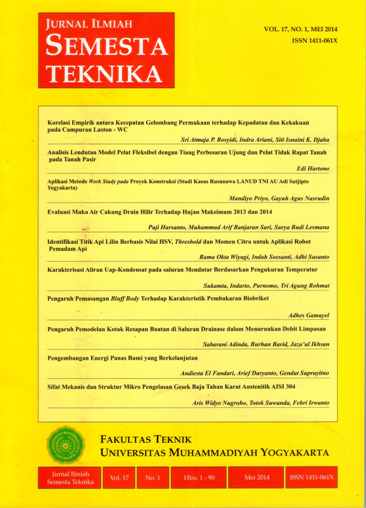Identifikasi Titik Api Lilin Berbasis Nilai HSV , Threshold dan Momen Citra untuk Aplikasi Robot Pemadam Api
DOI:
https://doi.org/10.18196/st.v17i1.407Abstract
Fire fighting robot is robot that has function to find and extinguish a candle flame in the space arena. To be able carry out their duties then the robot is equipped with sensors, controllers and drivers. Phototransistor, thermopile arrays, or UVTron is sensors that usually used in fire fighting robot. These sensors have some drawbacks. Phototransistor has a relatively close distance readings. While TPA81 thermopile array has a narrow field of reading only 41 ° x 6 ° from sensor. UVtron only limited to determine whether there is any point of the fire and was unable to determine absolute position or angle of the hotspots and vulnerable to damage if the jar is touched by the hand. Additionally TPA81 sensors and sensor UVtron is relatively expensive. This research aims to build a candle light detection alternative better in terms of specification, performance, price, reliability and ease of development. As the input of the system identification using webcams camera types. The webcam running on Raspberry Pi single-board computer. Image information is converted to HSV color space (Hue, Saturation, Value) and applied threshold processing. Thresholding HSV performed on the range of values contained in the object candle flame. To get the absolute position of a candle flame using moments analysis. Identification system can identify candle flame spot with the farthest distance is 225cm. Angle readings in the horizontal plane by 60 ˚ and the vertical plane by 40 ˚. The achievement of the highest FPS obtained in image resolution size of 320 x 240 pixels which is 8.129 FPS.
Downloads
Published
How to Cite
Issue
Section
License
Semesta Teknika is licensed under a Creative Commons Attribution 4.0 International License.
Authors who publish with this journal agree to the following terms:
- Authors retain copyright and grant the journal right of first publication with the work simultaneously licensed under a Creative Commons Attribution License that allows others to share the work with an acknowledgement of the work's authorship and initial publication in this journal.
- Authors are able to enter into separate, additional contractual arrangements for the non-exclusive distribution of the journal's published version of the work (e.g., post it to an institutional repository or publish it in a book), with an acknowledgement of its initial publication in this journal.
- Authors are permitted and encouraged to post their work online (e.g., in institutional repositories or on their website) prior to and during the submission process, as it can lead to productive exchanges, as well as earlier and greater citation of published work (See The Effect of Open Access).









